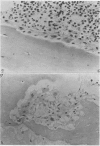Abstract
Hypercalcaemia and hypercalciuria are common complications of advanced mammary cancer. Of 127 patients with the disease 63 (49·5%) had some abnormality of calcium balance. Eighteen (14%) of these patients developed severe progressive hypercalcaemia and became acutely ill.
Most patients had skeletal metastases, and the usual cause of hypercalcaemia was rapid destruction of bone by the cancer. One patient with severe uncontrollable hypercalcaemia and minimal skeletal involvement probably developed the complication due to inappropriate secretion of a parathyroid-hormone-like substance by massive hepatic deposits.
Severe hypercalcaemia was controlled successfully in 13 of the 18 patients, the serum calcium levels returning to normal and the acute symptoms disappearing. Unfortunately, successful correction of the hypercalcaemia rarely was followed by prolonged survival from the underlying malignant disease. The incidence of subsequent objective response to pituitary ablation was less than usual, and only three patients survived for more than one year after the episode of hypercalcaemia.
Full text
PDF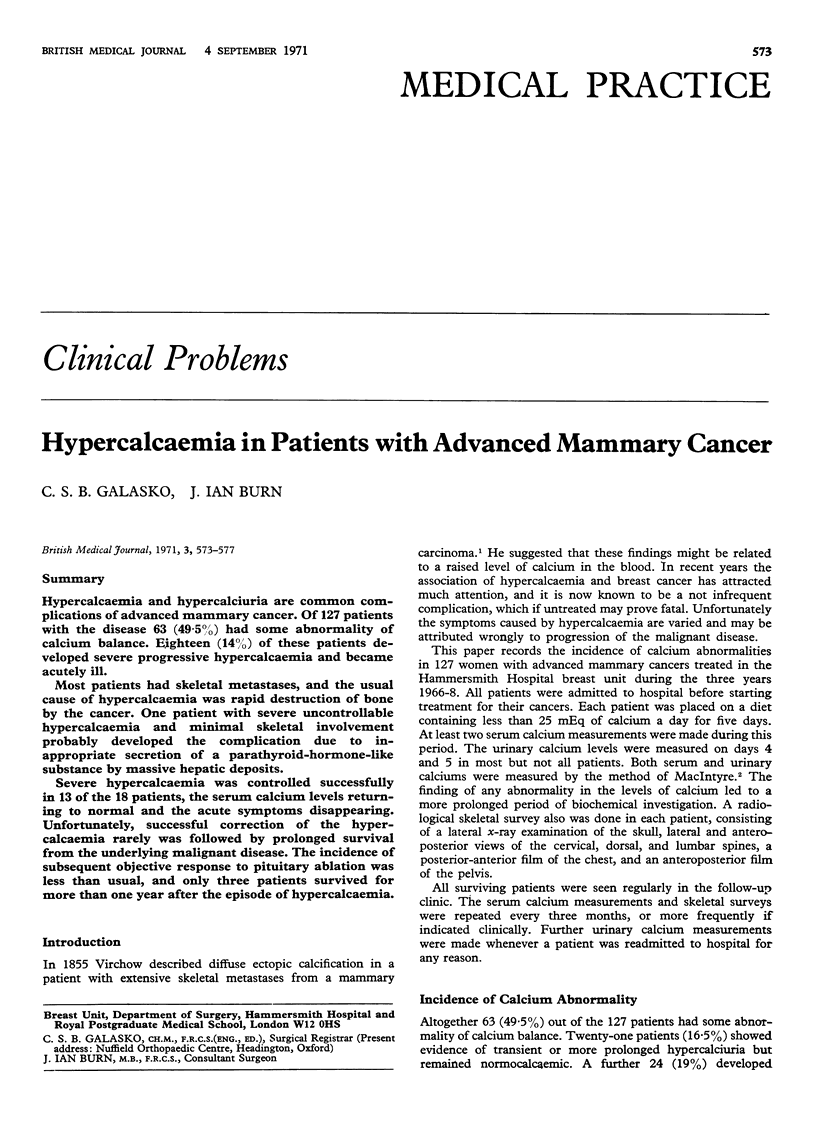

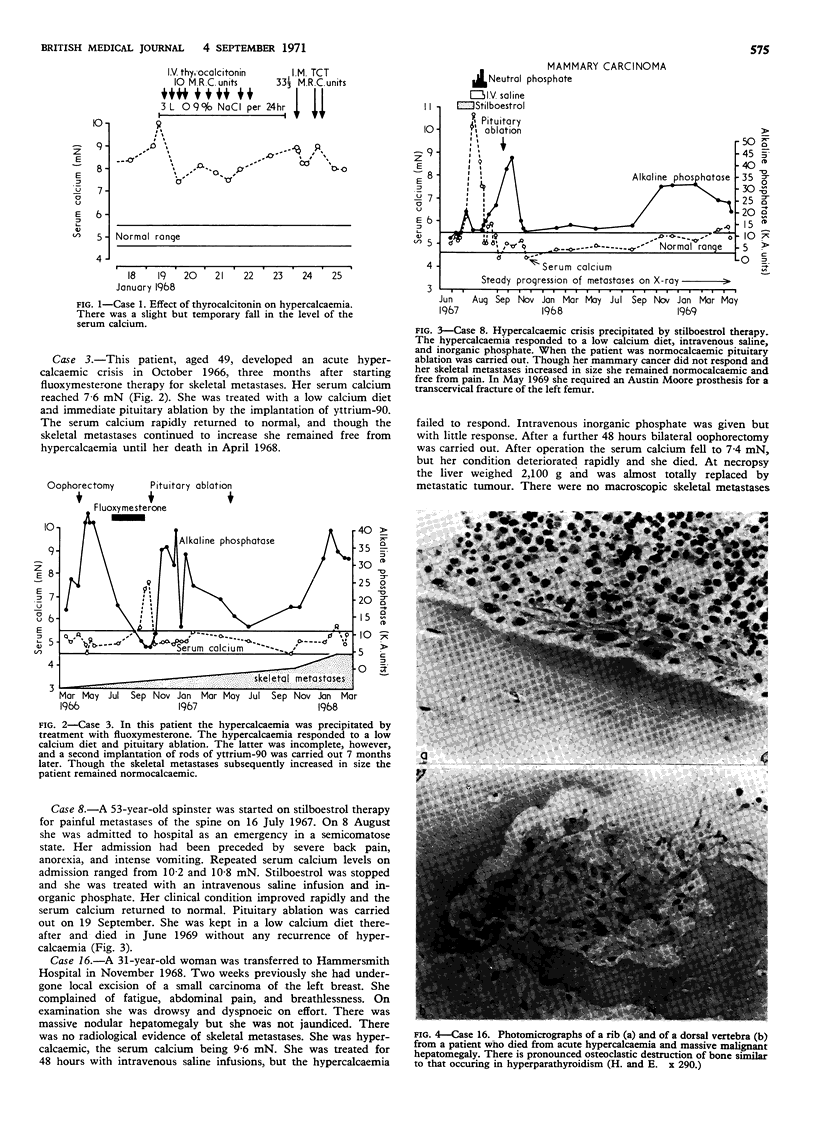
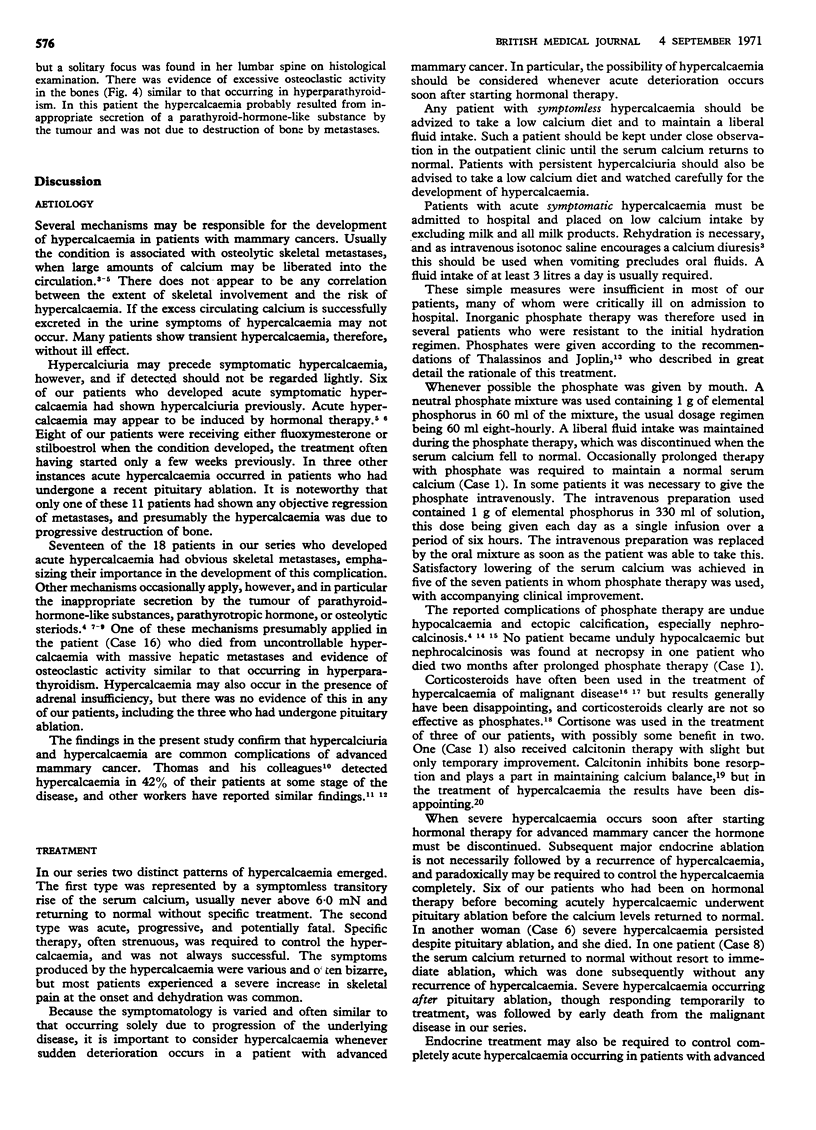
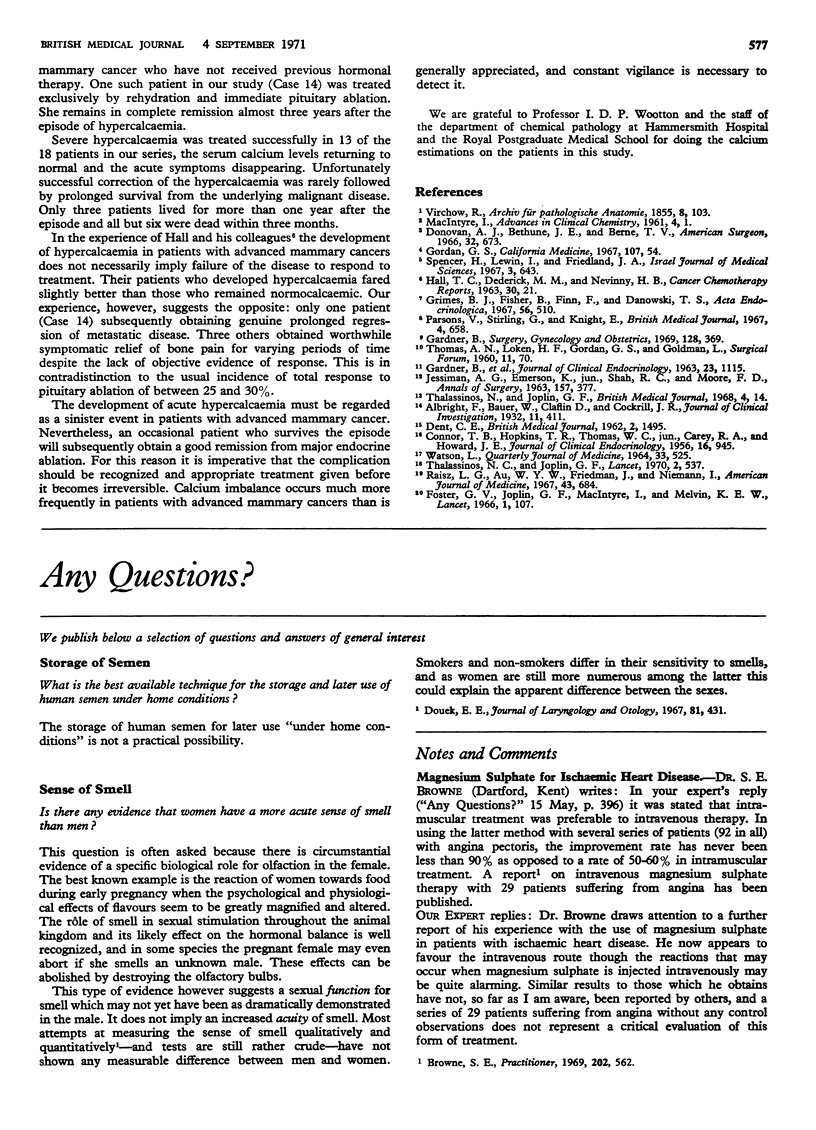
Images in this article
Selected References
These references are in PubMed. This may not be the complete list of references from this article.
- Albright F., Bauer W., Claflin D., Cockrill J. R. STUDIES IN PARATHYROID PHYSIOLOGY: III. The Effect of Phosphate Ingestion in Clinical Hyperparathyroidism. J Clin Invest. 1932 Mar;11(2):411–435. doi: 10.1172/JCI100423. [DOI] [PMC free article] [PubMed] [Google Scholar]
- DENT C. E. Some problems of hyperparathyroidism. Br Med J. 1962 Dec 8;2(5318):1495–1500. doi: 10.1136/bmj.2.5318.1495. [DOI] [PMC free article] [PubMed] [Google Scholar]
- Donovan A. J., Bethune J. E., Berne T. V. Hypercalcemia in patients with advanced mammary cancer and osseous metastases. Effect of hormone therapy and schedule of treatment. Am Surg. 1966 Oct;32(10):673–680. [PubMed] [Google Scholar]
- Foster G. V., Joplin G. F., MacIntyre I., Melvin K. E., Slack E. Effect of thyrocalcitonin in man. Lancet. 1966 Jan 15;1(7429):107–109. doi: 10.1016/s0140-6736(66)91255-4. [DOI] [PubMed] [Google Scholar]
- Grimes B. J., Fisher B., Finn F., Danowski T. S. Steroid-resistent hypercalcaemia and parathyroid hyperplasia in non-osseous cancer. Acta Endocrinol (Copenh) 1967 Nov;56(3):510–520. doi: 10.1530/acta.0.0560510. [DOI] [PubMed] [Google Scholar]
- Hypercalcemia of malignant disease. Calif Med. 1967 Jul;107(1):54–61. [PMC free article] [PubMed] [Google Scholar]
- JESSIMAN A. G., EMERSON K., Jr, SHAH R. C., MOORE F. D. Hypercalcemia in carcinoma of the breast. Ann Surg. 1963 Mar;157:377–393. doi: 10.1097/00000658-196303000-00009. [DOI] [PMC free article] [PubMed] [Google Scholar]
- MACINTYRE I. Flame photometry. Adv Clin Chem. 1961;4:1–28. [PubMed] [Google Scholar]
- Parsons V., Stirling G., Knight E. Fatal hypercalcaemia complicating carcinoma of breast, resistant to cortisone and phosphate administration. Br Med J. 1967 Dec 16;4(5580):658–659. doi: 10.1136/bmj.4.5580.658. [DOI] [PMC free article] [PubMed] [Google Scholar]
- Raisz L. G., Au W. Y., Friedman J., Niemann I. Thyrocalcitonin and bone resorption. Studies employing a tissue culture bioassay. Am J Med. 1967 Nov;43(5):684–690. doi: 10.1016/0002-9343(67)90110-6. [DOI] [PubMed] [Google Scholar]
- Thalassinos N. C., Joplin G. F. Failure of corticosteroid therapy to correct the hypercalcaemia of malignant disease. Lancet. 1970 Sep 12;2(7672):537–538. doi: 10.1016/s0140-6736(70)91345-0. [DOI] [PubMed] [Google Scholar]
- Thalassinos N., Joplin G. F. Phosphate treatment of hypercalcaemia due to carcinoma. Br Med J. 1968 Oct 5;4(5622):14–19. doi: 10.1136/bmj.4.5622.14. [DOI] [PMC free article] [PubMed] [Google Scholar]



